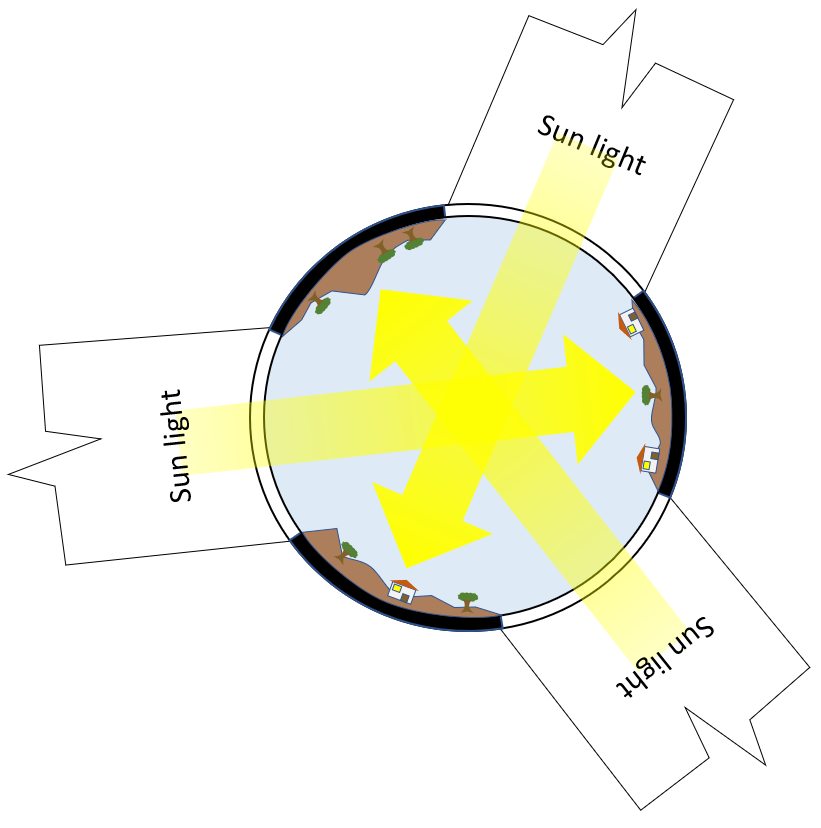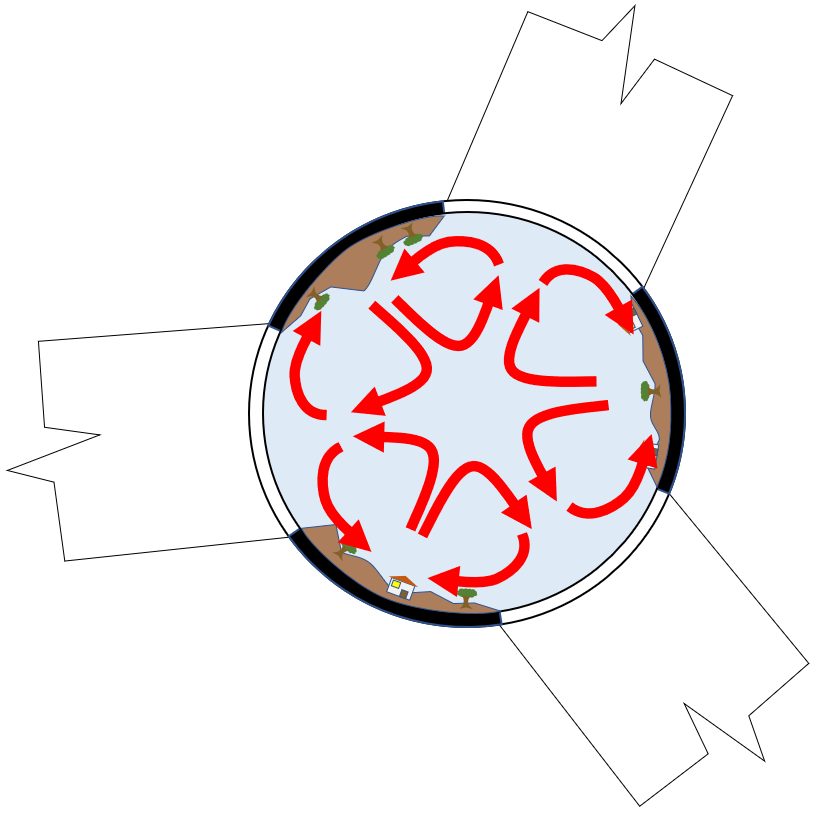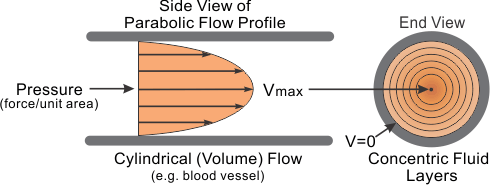A common, matter-efficient science-fiction habitat is a hollow cylinder or ring in space that is spun to simulate the pull of gravity on its interior surface. These habitats have been imagined as small as a spaceship, mere meters in radius, up to a ringworld, 1 AU in radius.
Say we have a rotating space habitat designed to mimic Earth’s gravity and atmosphere at sea level. Assume that the habitat has been rotating for however long it takes to reach whatever equilibrium state can be achieved. Will the rotational motion of the habitat generate winds in its atmosphere? In which direction will they prevail, spinward (with the direction of rotation) or anti-spinward (against it)? Will they circle the ring in a single direction or will there be antiparallel winds at different altitudes?
Ideally answers would be applicable to rotating habitats of various size, however, if the answers would vary widely between habitats please use a ring 10,000 km in radius for the answer.
Edit: There have been some previous questions about weather on rotating habitats such as my own What would the weather be like in an asteroid habitat? and Weather on a mini-ringworld/Banks Orbital. These questions are quite broad as weather is a complex subject, to put it mildly, and so were not very answerable. Here I have attempted to narrow the focus of the question to a single aspect of weather, the wind, in the hopes of generating more complete answers.







